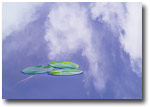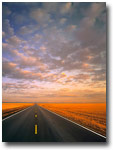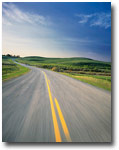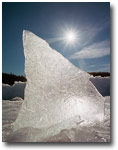 |
 |
||||
I have a problem - I am a gear junkie. I have bought and sold and traded so much gear that I could have opened my own camera store! Whenever some new piece of equipment came out, I fantasized over owning it and dreamt of how it would change my photographic life for the better. I was pitiful! At one time, my camera bag weighed over 70lbs and contained four separate camera systems (35, 645, 617, and 4x5). I figured I needed it all just in case the unexpected happened. I was like a troupe of boy scouts – always prepared. Also in the bag were focusing rails, three flashes, portable soft boxes, a light meter, a million filters, reflectors, flashlights, battery packs, infrared remote shutters, Polaroid backs, and 5-6 lenses for each camera. Did all this stuff allow me to make better images? Probably not, but it sure sapped my creative energy! After a day of lugging it all around, I was bone tired. Often, I would see something that looked interesting to photograph only to think “it’s just too much work to dig out the gear to shoot that.” A few years back, I finally realized that I was using 20-percent of the stuff in my bag about 80-percent of the time. The other 80-percent of the gear in the bag was just dead weight. So I pared it all down and came to rely on a much smaller, lighter pack of essential gear. That worked well for a long time, but even this stripped down bag seemed too heavy. A revelation came to me when I was asked to lead a field trip for a local camera club. I decided we should go to a flower greenhouse and shoot with only wide angle lenses. I thought by trying a lens that normally wouldn’t be used for flowers, we might get some creative and different images. We did, but I learned something even more important. Running about with just a camera, one lens and a tripod was liberating! I had tons of energy, nothing was too much work to set up, and it was fun shooting! I had nearly gotten rid of the gear monkey on my back. Soon after that I started to give myself the one-lens assignment over and over, because, I told myself, “it is good for creative visualization.” The real reason for these self-imposed assignments was that I am inherently lazy and the less gear I had to pack, the better I liked it. Now, I almost always just grab my camera, one lens, and a tripod and wander about. Boy, is photography fun with a light load! Sure there are times when I have on a 300mm lens and see something that would be great with a 20mm. But more often than not I discover that there are infinite images available for the lens I have chosen at the time. One of my favorite pieces of equipment in my new age of ‘enlightenment’ is a little 645 auto focus rangefinder camera (Fuji GA645) that I had but rarely used. This camera is as small as a 35mm camera and has a fixed 45mm lens (28mm equivalent in 35 format). When I hike in the mountains I take this camera, a polarizing filter, a carbon fiber tripod, a cable release and 2 rolls of 220 film. With it I am set to capture the grandeur of the mountains on medium format but with a camera barely weighing more than a point and shoot. When I am running about town doing errands I carry the camera loaded with film (no tripod) and do point-n-shoot medium format photography. I get images where I otherwise wouldn’t because the burden of gear was too overpowering. I finally understand what Galen Rowell was getting at all these years - less really is more! Photo 1 and 2 are from “one lens” only outings. The cow was shot with a 15mm fisheye, the water lilies with a 300mm lens. The remaining 4 photos were all shot with the little point and shoot Fuji 645 camera. I almost always throw this little camera in the vehicle because you never know when great light might happen (photo 3). Photo 4 is a self portrait from one of my hikes in the Rockies. In photo 5, I simply held the camera out of my vehicle window while driving and snapped this road shot. While out walking the dog in the off-leash park, we came upon this ice flow along the Bow River. I had the little 645 in my pocket and shot this image hand held while the dog cavorted with her furry friends. DW-NPN 0343 About the author... Darwin Wiggett and his wife Anita Dammer are the proprietors of Natural Moments Photography. Anita has 17 years experience as staff photographer for the Glenbow Museum in Calgary and is currently the editor-in-chief of Photo Life magazine. Darwin has been shooting stock since 1990, and has two books published by Whitecap in Vancouver; Darwin Wiggett Photographs Canada and Seasons in the Rockies. Darwin's newest book, How to Photograph the Canadian Rockies will hit the shelves in the spring of 2005. Together they specialize in landscape, nature, animal, humor and kid photography and are represented by various stock agencies worldwide. Their primary stock agent is First Light in Toronto, Canada. You can view more of Darwin's work at www.darwinwiggett.com and on his online portfolio. Comments on NPN creative nature photography articles? Send them to the editor. | |||||
|
|
|||||





